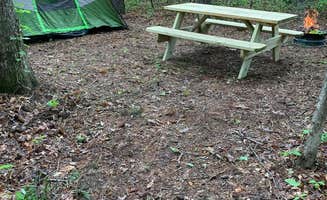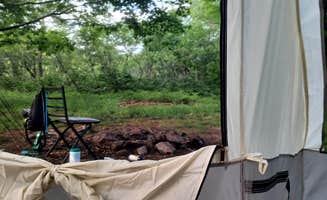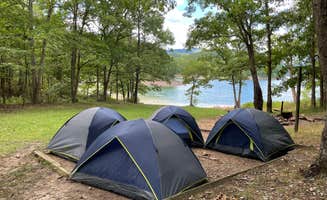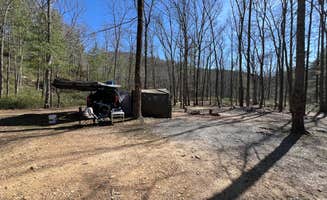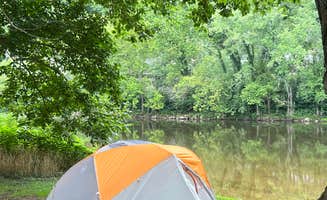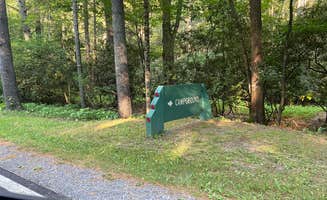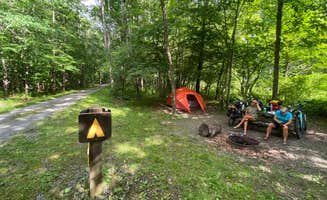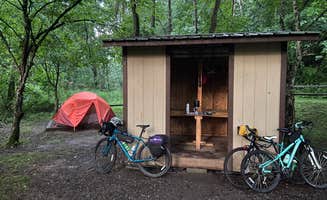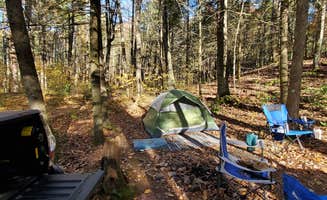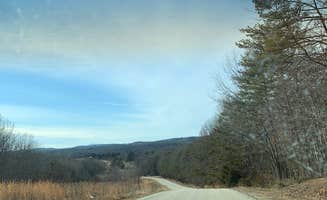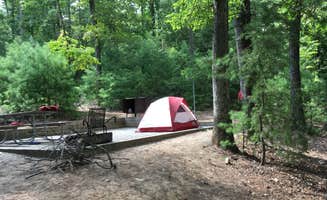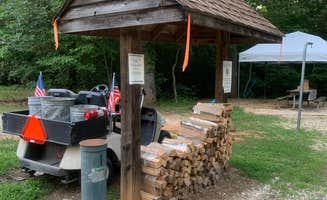Dispersed camping areas near Goshen, Virginia occupy a significant portion of George Washington National Forest at elevations ranging from 1,500 to 3,000 feet. The region sits in a rain shadow of the Allegheny Mountains, receiving less precipitation than areas to the west. This creates relatively dry camping conditions even after moderate rainfall, with tent sites typically firming up quickly following storms.
What to do
Fishing access points: Several sites along Forest Road 812 provide direct stream access. "There are hiking trails and easy access to the stream," notes David B. about a dispersed camping site off FR 812.
Stargazing opportunities: The area offers exceptional dark sky viewing with minimal light pollution. "There are very few places in the Eastern United States that get dark enough to view the Milky Way," shares Carrie J. about Meadow Creek Camping Area, recommending Spruce Knob for night sky observation.
Trail access: Many dispersed sites serve as gateways to hiking networks. "I'm all about trails so this place was greaaat!" reports Cara P. about the trail system near Poor Farm Dispersed Recreation Area, where multiple pathways connect to the larger forest trail network.
What campers like
Privacy between sites: Many campers highlight the seclusion between camping areas. At Breeden Bottom Campground, Lauren B. notes that "sites are spacious and right along the river. Most sites have river access directly from the site," adding that the James River there is "perfect for kayaking/SUP/canoeing and even swimming, nice and calm."
Water proximity: Access to lakes and rivers ranks as a top feature. Emily T. describes Greenwood Point Campground as a "beautiful quiet lake, not heavily trafficked. Campsite is only accessible via water, so we packed our gear up on paddle boards to get there. It's a private little cove, sites are first come first serve."
Winter camping options: Unlike some seasonal sites, several locations remain accessible year-round. Clayton S. reports visiting Poor Farm Dispersed Recreation Area "twice, once in the spring and once in the winter. Both times, the main camping area was empty. There is a large clearing off of Hidden Valley Rd that can easily accommodate multiple vehicles with 3 or 4 fire pits."
What you should know
Cell service limitations: Coverage varies widely but generally deteriorates in valley areas. "No cell coverage" is noted at Poor Farm by R C., while Jon N. reports "No cell service (T-Mobile), but if I drove towards the main road, Route 501, I could get some service" at dispersed camping off FR 812.
Access road conditions: Many sites require navigating unpaved roads. One dispersed site off Forest Road 812 is described as having "a very rocky path, about 50 feet long, to get into the campground, but then it is smooth and well laid out."
Water treatment needs: Natural water sources require purification. Comalee D. warns about Hog Camp Gap that "there is a spring but remember to boil or chemical treat the water before use is not tested for parasites another humble bacteria."
Tips for camping with families
Transport considerations: Some sites require carrying gear from parking areas. About Hog Camp Gap, Comalee D. explains that "you do have to carry all the stuff from your car do the campsite but luckily you don't have to walk too far because the parking area is right near the camping area."
Bathroom solutions: Most dispersed sites lack facilities. "I also recommend investing in a portable toilet Walmart has a toilet seat that goes on 5 gallon bucket stink free bags that go on as well," suggests Comalee D. about preparing for Hog Camp Gap.
Wildlife awareness: Proper food storage is essential in bear country. Emily T. notes that Greenwood Point Campground provides "lockers for wild animal protection of food," a feature particularly valuable for families with children and multiple food items.
Tips from RVers
Size restrictions: Most dispersed sites accommodate smaller vehicles only. Jim M. reports that Poor Farm Dispersed Recreation Area worked well when "I pulled in while passing through the area, it was a short ride off the highway and the road in was nice. Quiet spot with a nice grassy level area."
Van conversion friendliness: Some locations work well for smaller converted vehicles. Mikaela K. found that Poor Farm "wasn't too hard to get there and park in our van. Peaceful for the most part (a few campers were there)."
Spring conditions: Seasonal road conditions affect vehicle access. Clayton S. notes that at Poor Farm in spring, one clearing "is covered in wild hares," offering a unique wildlife viewing opportunity for vehicle-based campers.


